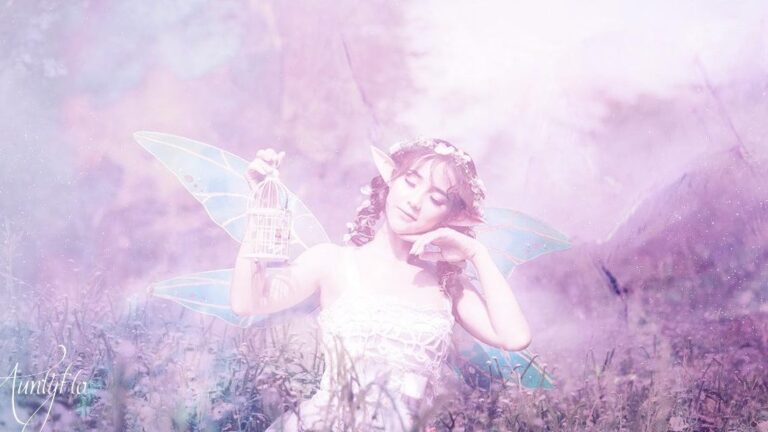Children’s fairy tales have long served as a conduit for exploring profound concepts, veiled within the fabric of narrative simplicity. While whimsical creatures and magical realms captivate the imaginations of the young, these stories often encapsulate deeper moral and spiritual lessons that can align harmoniously with the Bahá’í teachings. This article endeavors to unveil the spiritual meaning embedded within children’s fairy tales, illustrating how these narratives can foster a shift in perspective and stimulate curiosity.
At their core, fairy tales are archetypal tales that reflect the intrinsic values and ethical dilemmas faced by humanity. The Bahá’í Faith advocates for unity among nations, the equality of all peoples, and the pursuit of knowledge. In this light, fairy tales become not merely children’s entertainment but portals to understanding core Bahá’í principles through metaphor and allegory.
The Universality of Fairy Tales
Fairy tales from diverse cultures and epochs reveal a universal archetype of protagonists embarking on transformative journeys. This concept resonates with Bahá’í teaching regarding the necessity of a common foundation for humanity. The journeys of characters such as Cinderella, Aladdin, or Little Red Riding Hood signify not just personal growth but the broader human experience of striving for virtue amid adversities. These narratives inspire children to see the interconnectedness of their own lives with those depicted in the stories, fostering empathy and understanding across cultural lines.
The Symbolism of Transformation
Central to many fairy tales is the motif of transformation—characters often undergo significant changes that parallel the Bahá’í belief in spiritual evolution. Through trials, characters like Beauty from “Beauty and the Beast” move from superficial judgments to profound understandings of love and compassion. Such narratives encourage children to embrace challenges and view them as opportunities for personal growth and spiritual development, mirroring the Bahá’í emphasis on self-improvement and the development of virtues.
Divine Guidance and the Role of the Mentor
In numerous tales, the presence of a wise mentor or supernatural guide epitomizes the Bahá’í principle of divine guidance. Fairy godmothers, benevolent wizards, or talking animals often appear at crucial junctures, directing the protagonist toward enlightenment. This aligns with the Bahá’í view of spiritual educators and leaders, who provide essential wisdom and guidance in navigating life’s complexities. For children, recognizing these figures as representations of trust, hope, and faith can instill a belief in the divine presence that supports them in their own life journeys.
Love: The Unifying Force
Many fairy tales culminate in the triumph of love over adversity, echoing the Bahá’í doctrine that love serves as the fundamental adhesive that binds humanity together. Stories such as “The Princess and the Pea” remind young readers that sensitivity and kindness often lead to true harmony. These narratives explicate the Bahá’í perspective on the power of love—not only in personal relationships but towards all of humanity. This principle, when internalized, can inspire children to cultivate a spirit of love toward their peers, regardless of their background or beliefs.
Social Justice and Equality
Fairy tales frequently explore themes of justice and equity, where characters seek retribution for wrongs or strive for societal change. The Bahá’í teachings emphasize the importance of social justice and the eradication of prejudice. Characters such as the resilient protagonists in “The Little Mermaid” or “The Snow Queen” often challenge societal norms and pursue quests that reflect a deeper yearning for equity. Such narratives teach children that justice and equality are noble pursuits, empowering the next generation to become advocates for change in their communities.
Curiosity and the Quest for Knowledge
Many fairy tales provoke curiosity and inspire a thirst for knowledge. Characters often embark on quests that require them to learn about themselves and the world around them. This reflects the Bahá’í teaching that emphasizes the lifelong pursuit of knowledge and the importance of education as a means of personal and communal development. By engaging with these tales, children may cultivate a desire to explore, ask questions, and seek answers, thereby embodying the Bahá’í principle of learning as a continuous journey.
Embracing Diversity through Storytelling
The eclectic nature of fairy tales underscores the beauty of diversity, portraying varied cultures, traditions, and beliefs. The Bahá’í Faith deeply values the multiplicity of human experiences, asserting that diversity is a source of strength. By introducing children to fairy tales from multiple cultural backgrounds, they gain an appreciation for different perspectives. This appreciation can nurture inclusivity and compassion, vital traits for fostering global unity among diverse populations. Children learn to recognize that every culture has wisdom to offer.
Conclusion: Bridging the Imagination and Spirituality
In conclusion, children’s fairy tales resonate profoundly with the spiritual tenets of the Bahá’í Faith. These narratives are more than mere stories—they are vehicles for conveying essential values of unity, love, justice, and personal transformation. By engaging children with these magical tales and exploring their underlying meanings, caregivers can effectively invoke curiosity and facilitate a shift in perspective. In doing so, they can help nurture a generation that is not only enchanted by stories but also inspired to live by the virtues embodied within them, ultimately aspiring towards a more harmonious and understanding world.
